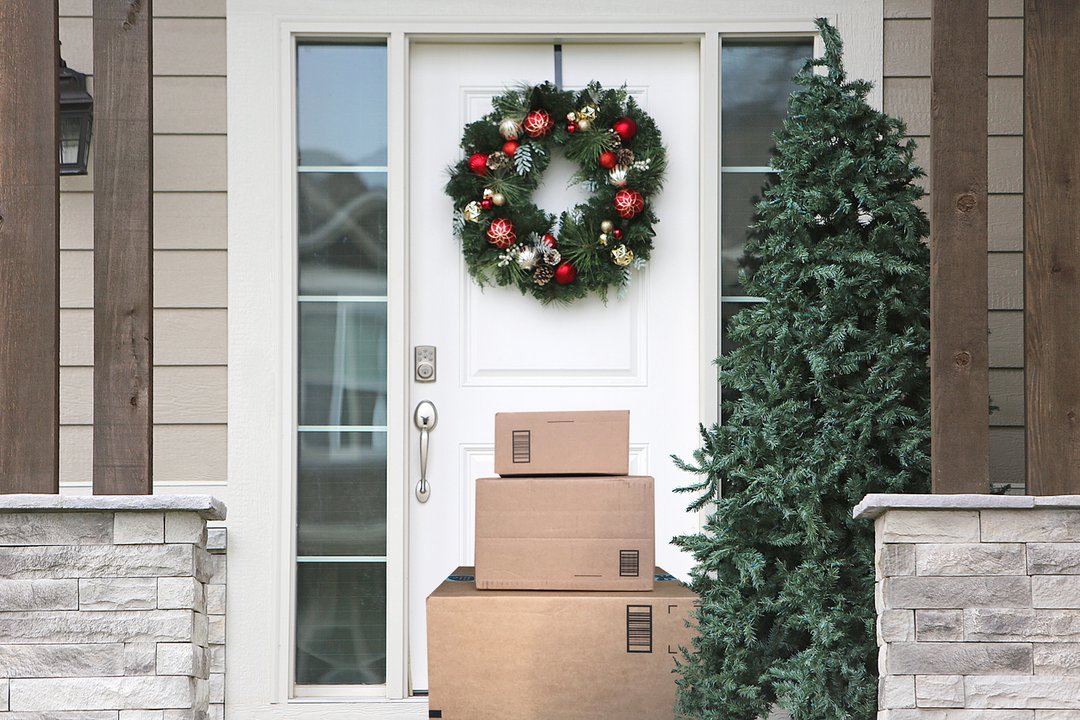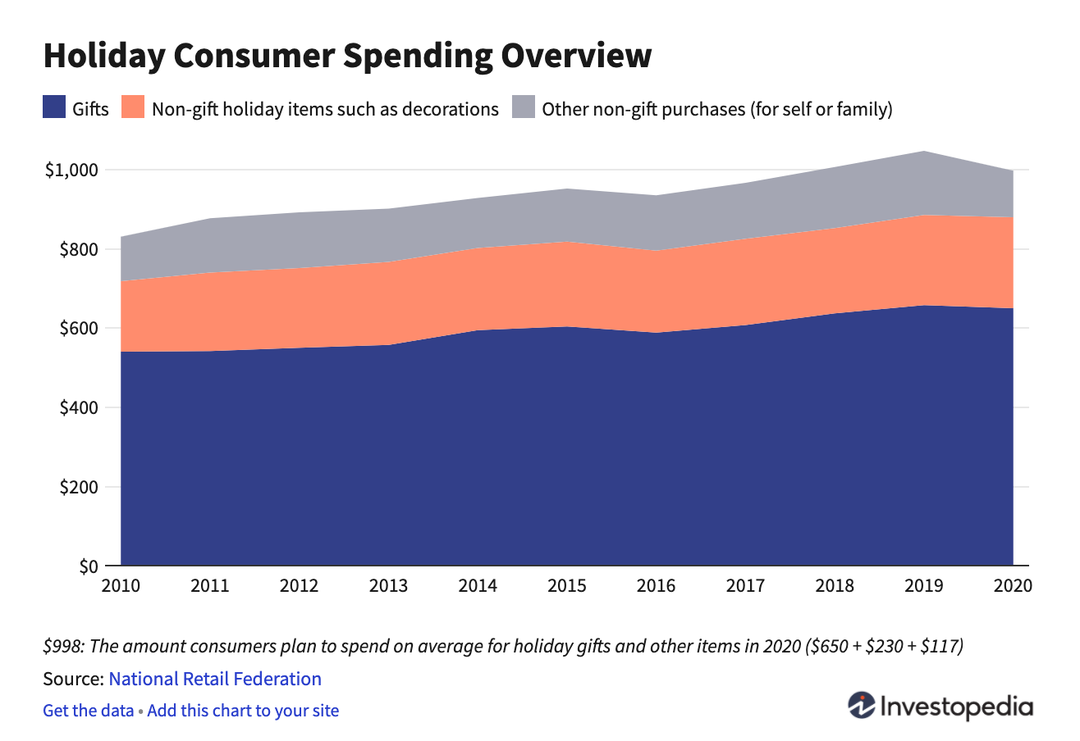
Jim Probasco
Dec. 21, 2020
Thanksgiving has come and gone; the winter holiday shopping season is upon us, though in a much more "cyber" form. That won't change the basic theme: Shoppers will feverishly continue to try to find the perfect meaningful gifts for everyone on their list.

iStock-1148923824.jpg
KEY TAKEAWAYS
- Nearly every year since 2009, American consumer spending on holiday gifts and other holiday expenses has increased over the previous year.
- For 2020, Americans, on average, expect to spend $998 on gifts, holiday items, and other expenses during the holiday season, down $50 from 2019.
- Over the past decade, e-commerce has captured an increasing percentage of holiday spending.
- The COVID-19 pandemic is projected to result in decreased spending on travel and increased spending on family and friends.
From the shopping frenzies of Black Friday and Cyber Monday to the last-minute sales just before the actual holidays happen, the American commercialization of the holidays plays a big part in how much the average American pays for all of his or her holiday expenses over Thanksgiving, Christmas, Hanukkah, and Kwanzaa.
Between gifts, holiday parties, and decorations, the season in America seems to be getting more and more extravagant (and expensive). Below is a look at the average cost of the American holiday season and a glance at why the cost is steadily rising.
Planned Winter Holiday Spending for 2020
According to data provided by the National Retail Federation (NRF), Americans plan to spend roughly $998 on gifts, food, and decorations in 2020. This is down about $50 from 2019 planned spending, with almost all of the decrease ($45) coming from the non-gift purchases category.1

Planned holiday spending breaks down to $650 on gifts for family, friends, and co-workers; $230 on non-gift holiday items including food and decorations; and $117 on other non-gift items for self or family.2
A significant chunk of that spending will be online, according to the NRF which expects online and other non-store sales to increase between 20% and 30% ($202.5 billion to $218.4 billion) up from $168.7 billion in 2019.3
It Gets Complicated
Looking at the numbers above, it's clear consumers plan to spend slightly less on the winter holidays for 2020 versus 2019. Nevertheless the NRF projects that overall holiday sales will grow between 3.6% and 5.2%. How can both things be true?

The NRF projects retail sales over the holidays (Nov. 1 through Dec. 31) including "traditional holiday purchases but also items not specifically for holiday celebrations." Separately, the NRF surveys consumers on planned holiday spending only. Simply put, while consumers plan to spend slightly less on holiday expenses, they are expected to spend more overall during the holiday season.4
An Upward Trend Since 2010 (Almost)
In 2010, Americans planned to spend an average of $831 on the winter holidays. This year's average of $998 represents a 20% increase over the decade or an average increase of 2% per year. Inflation, which has averaged 1.67% over the same decade accounts for some, but not all of the increase. Actual retail holiday period sales, including non-holiday purchases, has averaged 3.2% growth per year, according to the NRF.4 5
Even with the slight dip in planned holiday spending for 2020, Americans on average plan to spend—and, in fact, do tend to spend—more with almost every new holiday season.
The Cost of COVID
No holiday season in recent memory has had to factor in the impact of a pandemic on the cost of decorating, giving, and celebrating. And yet, here we are with planned holiday spending down slightly and overall holiday period spending expected to be up 3.6% to 5.2%, beating the 3.2% per year increase in spending over the past decade.3
Another factor to consider is "planned" versus "actual" spending, something we won't know until the holidays are over. NRF Chief Economist, Jack Kleinhenz says he believes actual spending will be "more than anyone would have expected just a few months ago." "After all they’ve been through," Kleinhenz says, "we think there’s going to be a psychological factor that they owe it to themselves and their families to have a better-than-normal holiday."3
One thing we do know is that COVID has led to a shift in holiday-spending priorities. One in five (19%) of holiday shoppers say that they typically travel for the holidays but will stay home instead this year. Over half (53%) of those who changed their holiday travel plans said they are likely to spend more on family and friends this year, specifically because they will not be traveling.1
The Bottom Line
Americans' actual spending has increased each holiday season since 2010 and they are expected to continue that tradition in 2020. Shoppers are slightly more cautious when it comes to their planned holiday-specific spending, indicating an expected slight ($50) decrease from planned spending in 2019.4 2
COVID-19 is expected to shift priorities, resulting in less spending on travel and more spending on family and friends. Planned versus actual holiday spending is a mystery for now. Stay tuned to see how it turns out.
Article Sources:
- National Retail Federation. "Consumers Prioritize Spending on Family, Friends Ahead of Holiday Season." Accessed Nov. 30, 2020.
- National Retail Federation. "2020 Overview." Accessed Nov. 30, 2020.
- National Retail Federation. "NRF expects holiday sales will grow between 3.6 and 5.2 percent." Accessed Dec. 1, 2020.
- National Retail Federation. "Winter Holiday FAQs." Accessed Dec. 1, 2020.
- Statista. "Projected annual inflation rate in the United States from 2010 to 2021." Accessed Nov. 30, 2020.



